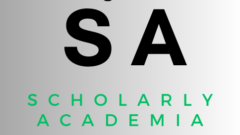COURSE:
ECON312N: Principles of Economics
Instructions
For the assignment, address the following:
- List and briefly explain the features of a perfectly competitive market structure.
- How do firms in a perfectly competitive market determine price and profit-maximizing output levels? (Note: You will be building on your discussion post related to this question in the paper. Be sure to do more than just repeat what you stated in the discussion; instead, expand upon it based on feedback and dialogue and further research from our work this week.)
- According to Papanicolas, Woskie, and Jha (2018), the main drivers of the cost of healthcare in the U.S are “labor and goods, including pharmaceuticals and devices, and administrative costs” (Key Points section, para. 2). This (labor and goods as drivers of cost) occurs in higher education and in the arts as well. Imagine that you are the Chief Financial Officer (CFO) of a large medical facility, a higher education institution, or an arts organization (select one to frame your response). What cost-cutting measures would you propose to address the excessive cost of operating the facility while maintaining the quality of services?
Click on the link to read an excerpt from the article:
Competitive Market Structure
According to Mert (2018), the four features of a perfectly competitive market structure include; the existence of homogenous products, big firms, technological and price knowledge. As such, this indicates that companies in a perfectly competitive market structure find it difficult to have control over the market. Also, since many big firms produce homogenous products in the market, this results in an increase in the number of substitute products………..please follow the link below to purchase the solution at $10
